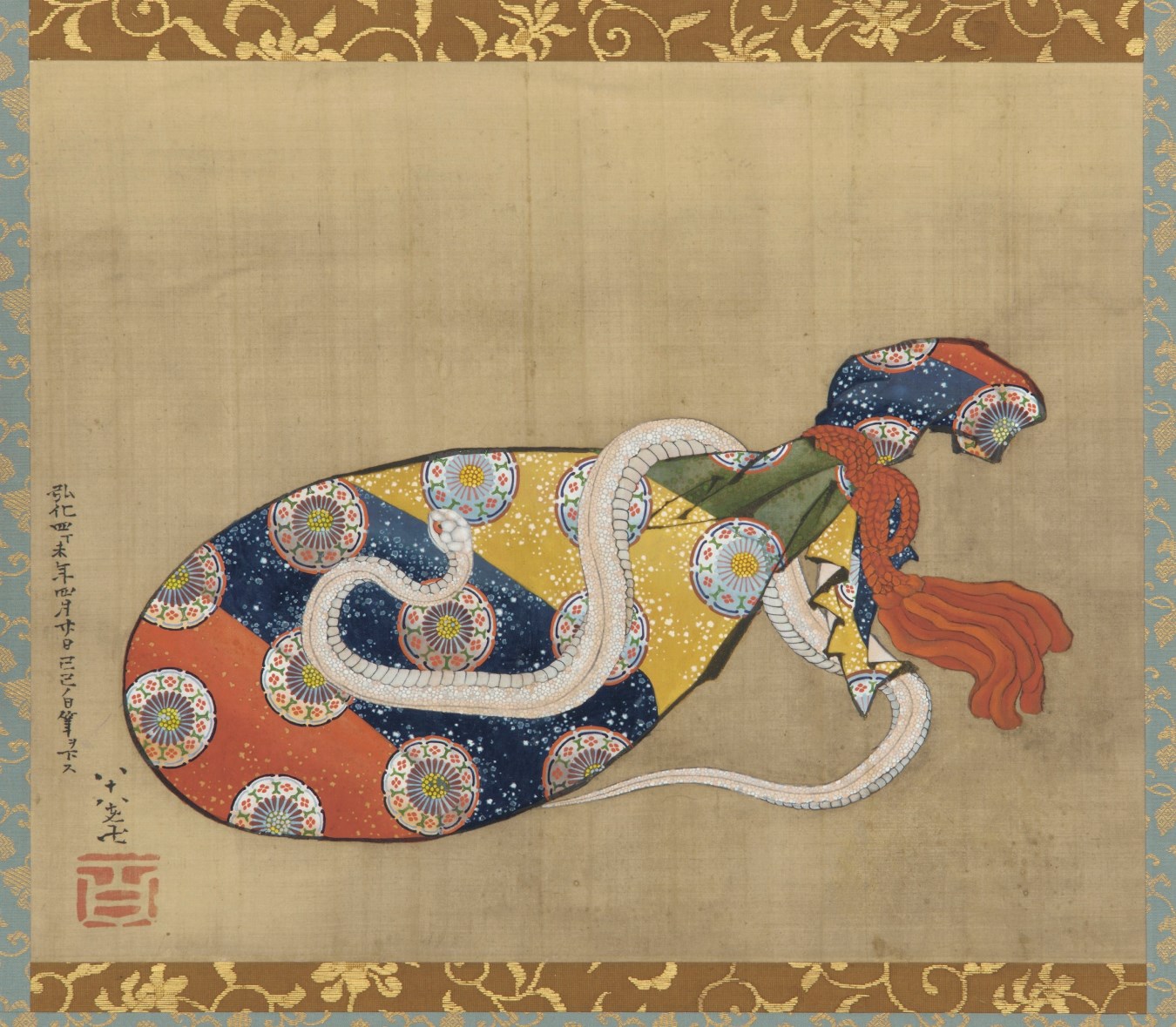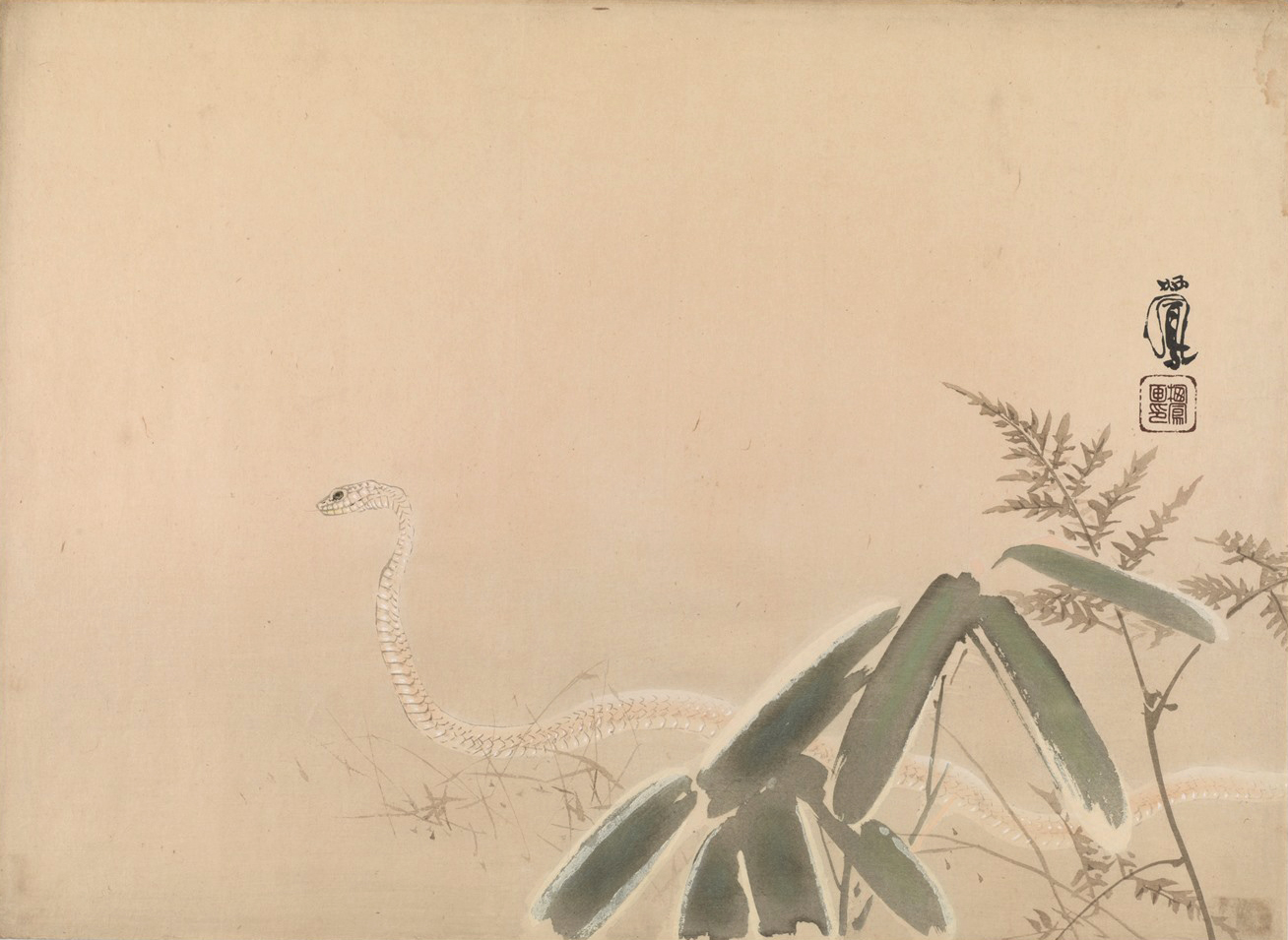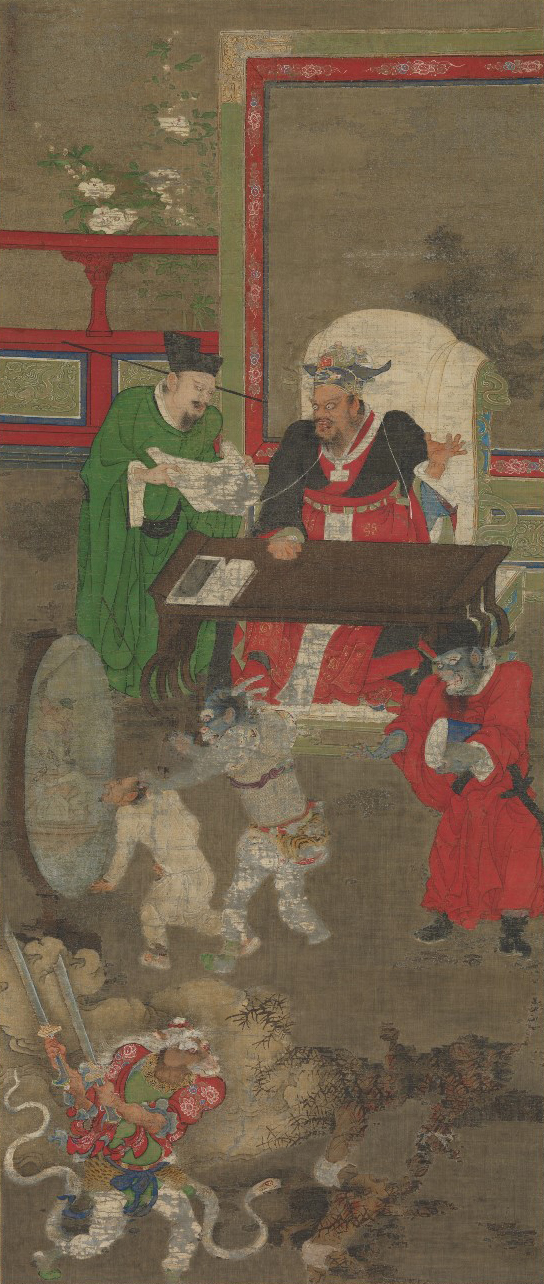Snakes and snake products are in use for medical purpose in many countries across the Indian ocean. Stories about this animal were gathered and written by students. They are all part of a pedagogical project, funded by the National University of Singapore and the Université de Paris. The Bestiary site is a work-in-progress and a participatory educational tool, representing animals whose products or body parts are used to promote health and healing.
Snake’s Rebirth
A Story by Jaslynn Ho Tze Tsing
The hebi or snake has a wide variety of symbolism in Japanese culture. The snake, when depicted as a yokai – a class of supernatural monsters or spirits in Japanese folklore – is associated with negative connotations where snake-like beings are cast as man-eating monsters that terrorize humans. The fear and dislike of snakes can be seen through the expressions and sayings the Japanese have. For example, the Japanese have an saying, “A snake will gather its friends”, similar to the English expression “Birds of a feather flock together.” In this expression, the use of the snake conveys the implication of evil following evil. Or the expression that if a woman is jealous or has hatred in her eyes, she is said to have snake-like eyes. It is a reference to snake yokai, which are man-eating and believed to lure unsuspecting victims to their deaths. Many of the yokai have the head of a man and the body of a snake. In some other cases, snakes are also a representation of rebirth, transformation and protection. For the ancient Japanese, who saw the creature’s meaning in its shapes, sounds and actions, the snake was significant to them. Snakes eating mice, thus protecting crops resulted in them being a symbol of protection from pests. Their ability to moult was regarded as a sign of continual rebirth. White snakes especially, were regarded to be connected with metal, due to their continuous life and the influence of Chinese sayings. Therefore, if a Japanese finds a molted snake skin, it won’t be unusual for them to keep it in their wallets, representing the belief that the money you spend will come back in greater amounts.
Snakes in real life Japan
With its humid climate, Japan is home to a large number of reptiles with 47 species of snakes alone. Luckily most of the snakes are not venomous, mainly feeding on small mammals. The most common snake is the Japanese Rat Snake or Aodaisho (Elaphe climacophora) which is harmless. In Iwakuni city, Yamaguchi Prefecture, there exists the only place in the world with an entire natural population of albino rat snakes, snakes that are white and have pink eyes. The white snakes (shirohebi in Japanese) are symbols of good fortune and are revered as messengers of deity, Houkan Shirohebi Benzaiten, the guardian of economic fortune, provider of business blessings, and deity guardian of mountains and rivers. A Shinto shrine, Shirohebi Jinja, is dedicated to Houkan Shirobehi Benzaiten, with white snake motifs and designs all around the shrine. The albino snake population was protected in 1924 as a “national monument”. However, venomous snakes also made its home in Japan, the most dangerous one being the Japanese Mamushi (Gloydius blomhoffii). Its bite causes tissues to liquefy, with more severe bites leading to intensive care. Fortunately, their bites are not usually fatal with only 5-10 out of 2000-3000 people succumbing to their wounds. Currently, the mamushi is not on the IUCN red list, however, recent years have seen an increase in its use in Japanese folk medicine and whiskey making. The mamushi is boiled and eaten in order to increase blood levels. The flesh can also be used raw by placing it on wounds. Another way is to preserve the snake in alcohol, resulting in the Mamushi Zake. Habushu is another snake alcohol with Habu, a venomous viper that is preserved in sake. These snake alcohols are based on a belief that they can help with sexual dysfunction in men, by increasing virility because of snakes’ ability to mate for as long as 26 hours.
Value in Asian medicine
Japanese snakes are used as medicine, specifically mamushi (Gloydius blomhoffii), the most venomous snake in Japan, is used in the making of alcohol in order to boost energy. The mamushi is most frequently seen as a representation of kami, a god, and in the past, it was a taboo to kill it. However, due to the introduction of other cultures and beliefs, the mamushi is no longer protected, but is instead, subjected to indiscriminate and irrational killing, as with other venomous species. The mamushi is used heavily in traditional Chinese medicine too, mostly in the form of alcohol. Snake wine is a liquor that is prepared by putting an entire snake, sometimes while still alive, inside a jar of rice wine or some other kind of grain alcohol. It is then left to steep for several months. On occasion, herbs and spices such as ginseng are added to the formula. An alternative form of the drink does not call for marinating the snake. Instead, a live snake is killed on the spot and its blood and bile are then mixed with alcohol, which is consumed immediately by the customer in the form of a shot. The different parts of a snake have long been thought to have various health benefits in traditional Chinese medicine. For instance, snake meat is thought to improve circulation and the skin, while the gall, bones, and snakeskin are thought to cure ailments such as sciatica, migraines, and rheumatism. Snake venom, however, is the most valuable ingredient derived from the snake. Hailed as a ‘divine medicine’ during ancient times, it has been touted as a cure for ailments ranging from joint pain to hair loss to leprosy, and is also said to enhance sexual performance. Therefore mamushi being one of the most venomous snakes, is highly sought after. Modern studies have shown that snake wine has analgesic (painkilling) and anti-inflammatory properties, suggesting that it may indeed be good for certain ailments.






